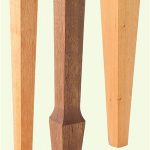We may receive a commission when you use our affiliate links. However, this does not impact our recommendations.
Teach the Young and Local

The entire school. With no electric machinery, Underhill can run his entire school out of a restored storefront.The Woodwright’s School is unlike any other in the country. For starters, the shop has only hand- and foot-powered tools. There are 10 excellent Hoffman & Hammer woodworking benches – very heavy and equally German. All of them face the bay windows and are equipped with a basic complement of hand tools – from carcase saws to bench planes – all sharp, set up and ready to go.The walls are lined with tool chests brimming with more hand tools. A shelving unit at the rear of the room holds rows of moulding and joinery planes. Another bookshelf is stuffed with old woodworking texts.In each of the bay windows at the front of the room are the sharpening stations. One is for saws; the other is for edge tools (there’s even an AO binocular microscope there for examining your edges). The middle of the room has a treadle-powered table saw, lathe and scrollsaw.Ready to work. All the tools on all the benches are sharp, proper and ready to go. This is a big leg up for beginning woodworkers who might never have worked with a properly set saw or chisel.
The school also comes with an unusual mission and a set of rules for students.
About those rules: Underhill says students are welcome to bring their own tools, but he asks that you not bring tape measures (“I’ll confiscate them and put them in the storage room,” he says with a wicked laugh.) Also, no plastic-handled chisels. No Japanese pullsaws. “This should look like you have stepped back into a shop class in the 1930s,” he says.
“We’re going to be doing English-style joinery,” he says. “You wouldn’t build a shoji screen with a big Disston. That would be like stir-frying grits.”
He also requests that students turn off their cell phones and wear clothing that would be fitting to the time if possible – no beer T-shirts, please. Of course, Underhill spent many years at Williamsburg, so immersing himself (and others) in a certain time comes naturally.
Why is he so intent on recreating the past?

Sharpening station. One of the bay windows of the shop has a table with plenty of sharpening stones and natural light for sharpening edge tools.
“This is not about the past,” Underhill says, his arms spread wide toward the workbenches lined up on the shop floor. “Well yes, of course it’s about the past in one sense. But it’s really about the future. The objective is the future.”
As a result, Underhill wants his new school to educate young and local woodworkers about hand-tool woodworking. Though he knows that the school will attract students from all over, Underhill says he wants to emphasize training young people so the craft has a future. And he wants to train locals to help build the community.
In February 2009, Underhill opened his school with a series of one-day classes on basic joinery. The first set of classes filled up in just hours. Those classes will lead to classes on building a tool chest. And Underhill says he’s going to bring in other instructors as well.

The saw window. The other bay window is for sharpening saws. Underhill says that when the local residents see him sharpening saws they try not to interrupt him.
Those people will teach a class for a week and then Underhill will shoot a segment with them during the weekend for “The Woodwright’s Shop.”
The Details
What is intoxicating about The Woodwright’s School is how much effort Underhill put into the details. The oilstones at the sharpening station look like they’re from the right era. The bench planes are a mix of metal- and wooden-bodied ones – again, just what you’d see in a 1930s shop.
There’s even a portrait of Franklin Delano Roosevelt hanging on the wall, a sticker in the window for the Works Progress Administration and a huge radio at the back of the room. In fact, the little bit of technology that Underhill allows looks curious and out of place – Underhill uses a digital camera and television to demonstrate work close-up.
There are even some details you can’t see.
“Each workbench comes with one of these,” he says, pointing to a pile of old English and Irish coins. “It’s tradition to fasten one of these to the underside of each bench. They’re for the wee folk.”
So if you’re a jolly European tree sprite who happens to stop by The Woodwright’s School on your travels, be sure to look under the benches for the coin that Underhill has left for you. And do note how the coins are attached. Underhill has gone the extra mile and used authentic vintage hobnails.
But will all this effort pay off?
“This whole thing has been like jumping off a cliff – and then figuring out how to fly,” he says. “We’ll see if it works.” PW
If you want to learn more about Underhill’s new school, visit woodwrightschool.com.

One foot-power. The treadle table saw at the school has both a rip fence and a crosscutting guide. It makes remarkably clean cuts with (just a little) practice.
Christopher is the editor of Popular Woodworking and Woodworking Magazine.
Here are some supplies and tools we find essential in our everyday work around the shop. We may receive a commission from sales referred by our links; however, we have carefully selected these products for their usefulness and quality.








